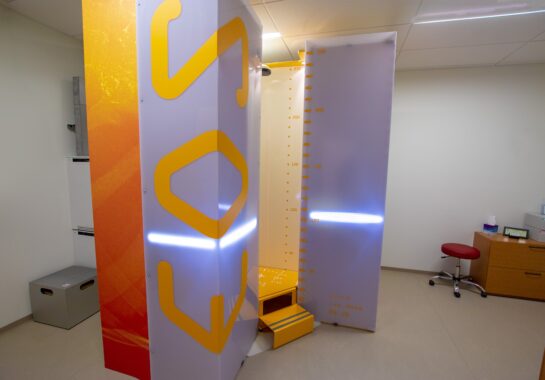What is an EOS scan?
EOS stands for Electronic Optical Scan and refers to a specific type of low-dose X-ray imaging system that allows for detailed, weight-bearing images of the musculoskeletal system, typically taken while the patient is standing.
It can capture full-body, frontal, and lateral (side view) images of the skeletal system simultaneously, in either a standing or sitting position. It can also be set to scan a particular region of the body. EOS uses significantly less radiation than traditional X-rays or CT scans.
How is an EOS scan carried out?
The scan involves sitting or standing in a cubicle-like structure (don’t worry, the patient won’t get wet) for approximately 5 minutes.
Before the scan, patients will be asked to undress and provided with a gown to wear. During the scan, the radiographer will speak with the patient and ask them to remain still.
They will not feel anything, and nothing will touch them. Once the scan is complete, a qualified doctor will review the scan images and provide a report to the referring doctor.
What types of EOS scans are available?
EOS scans are effective for assessing conditions of the spine, hips or legs such as scoliosis and hip dysplasia.
